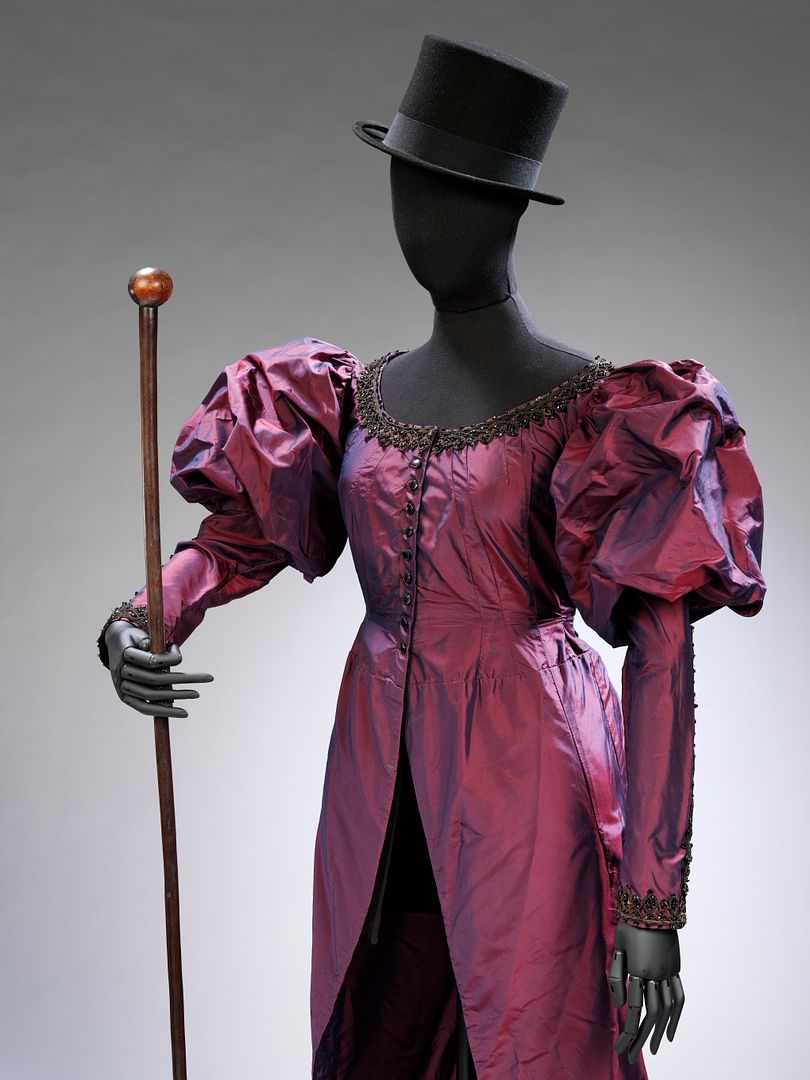
Red cloak, staff and top hat worn in God Rest Ye Merry Gentlemen music video, 2010. Designed by Annie Lennox and made by Stephanie Cooper. Courtesy of Annie Lennox.
The curators worked with Lennox to develop this exhibition, conceptually built around the idea of a house, which Annie Lennox believes is a “representation of self and her fascination with reality versus illusion.” Located in the Theatre and Music department, the exhibition opens with a wall-size graphic of a brick home with a photo of Lennox collaged into one of the windows. Entering through the house’s front door, the exhibition is contained within two rooms. In the center of the first room is a small model of the same house, the size of a child’s playhouse. Inside is a regularly sized desk and chair, and visitors are welcomed to enter and interact with the space. Inlaid into the wooden desk are a variety of musical notations and lyrics to some of her most well known songs, along with coins and pens, and the drawers with the Alice in Wonderland-like command, “Open Me,” expose more letters and memorabilia.
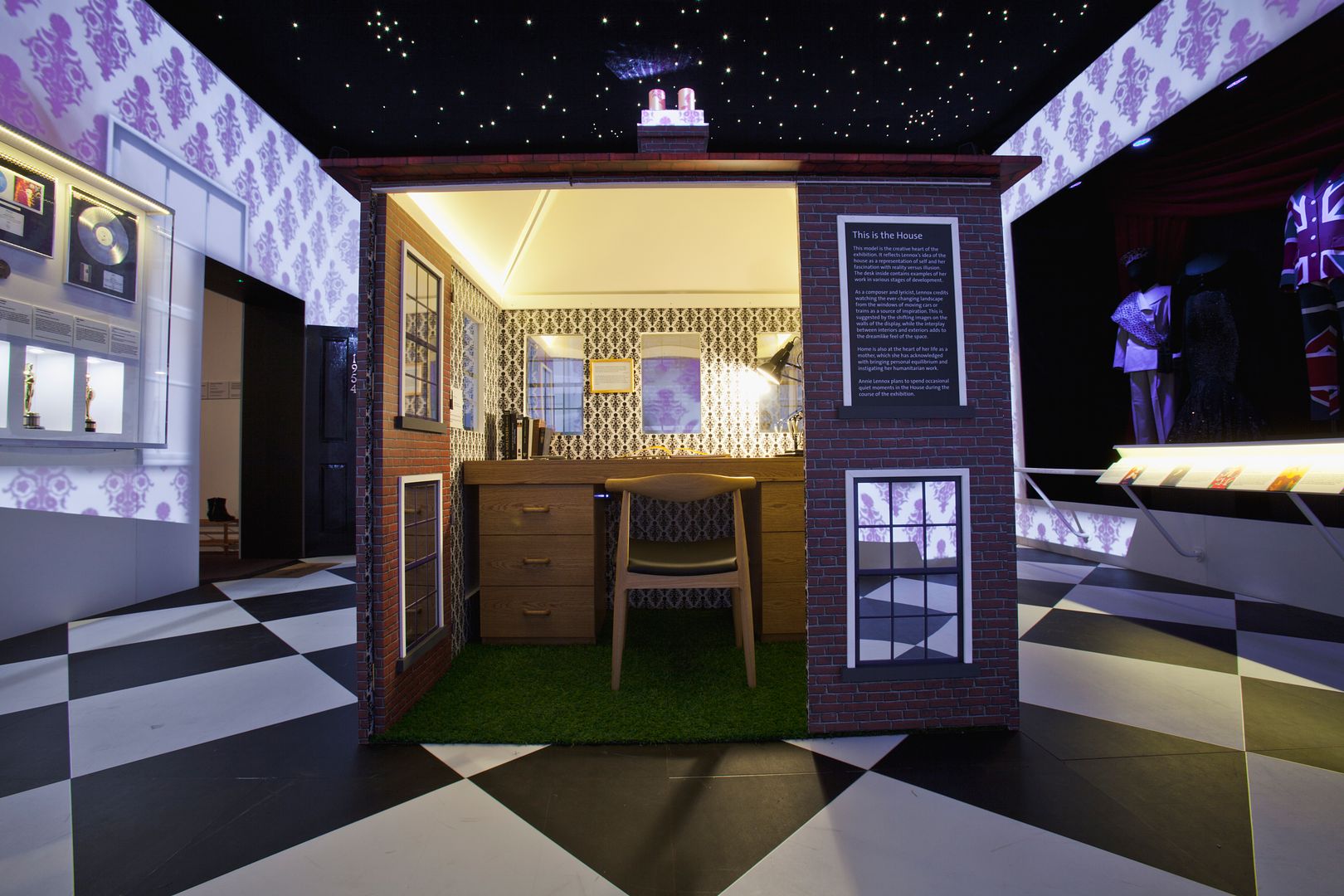
The miniature home in 'The House of Annie Lennox.' © V&A images
The walls of the surrounding room are projected with a constantly changing series of images — flocked wallpaper motifs and images of Lennox alternate, while at times the whole room darkens with a starry sky visible on the ceiling. This shifting imagery is meant to call to mind, in a dreamlike way, the flow of landscape past a moving car or train window — a source of inspiration for Lennox. While interesting conceptually, the continual changes and the innate trembling of the projection make for more of a sense of disquiet than one of dreamy idyll. The four walls focus on different aspects of her career; with the first showcasing prestigious honors she has been awarded, including an Oscar and a Grammy, alongside objects related to her humanitarian campaigning. Four sunken mirror displays are set into the next wall, each containing memorabilia and accessories from different periods of her career — these include an iconic issue of the British youth magazine, The Face, from October 1983 with Lennox on the cover, masked and with short cropped dyed orange hair.
One of the sunken displays with items related to the hit song, Sweet Dreams (Are Made Of This), 1983.
A wall-size display case exhibits seven mannequins dressed in well-known outfits that illustrate Lennox’s interest in playing with notions of gender and identity. The earliest is a gold lame corset with matching gloves (“a beginner’s attempt at pop costume irony”, in her words) that Lennox designed in the late 1970s, which was worn when performing with The Tourists, and which is echoed in a velvet corset from 1995. Following the quite overt femininity of these ensembles, with Eurythmics Lennox was known for wearing androgynous, boxy suits that, with her cropped hair and stark makeup, subverted ideas of what a female pop singer should wear. An example of an early masculine suit, by Jeff Banks (1983), is shown with the traditionally feminine leopard-print pillbox hat and sash she accessorized it with. Another suit by Banks, in black leather (1986), was worn in two Eurythmics videos and on tour. A Union Jack suit from 1999 stands in between a sequined evening gown with tailcoat (1992) and a modern reworking of a late Victorian dress that was worn with a top hat and an African staff. Combining a variety of historical and art historical references into her costumes (most of which are her design), these ensembles exhibit a certain fantastical flair that aided their perfomativity. The gender ambiguity of her suits provide an intriguing counterpoint to the over-the-top sexuality of the evening gowns and corsets, depicting an innate dichotomy in her style and the way she chooses to represent her self to the world. The mannequins’ stand in a dark space with red swaths of theatre-like curtains behind them, again drawing parallels to their previous existence on stage and screen. The final wall contains a video screen showing an interview with Lennox on her music and work.
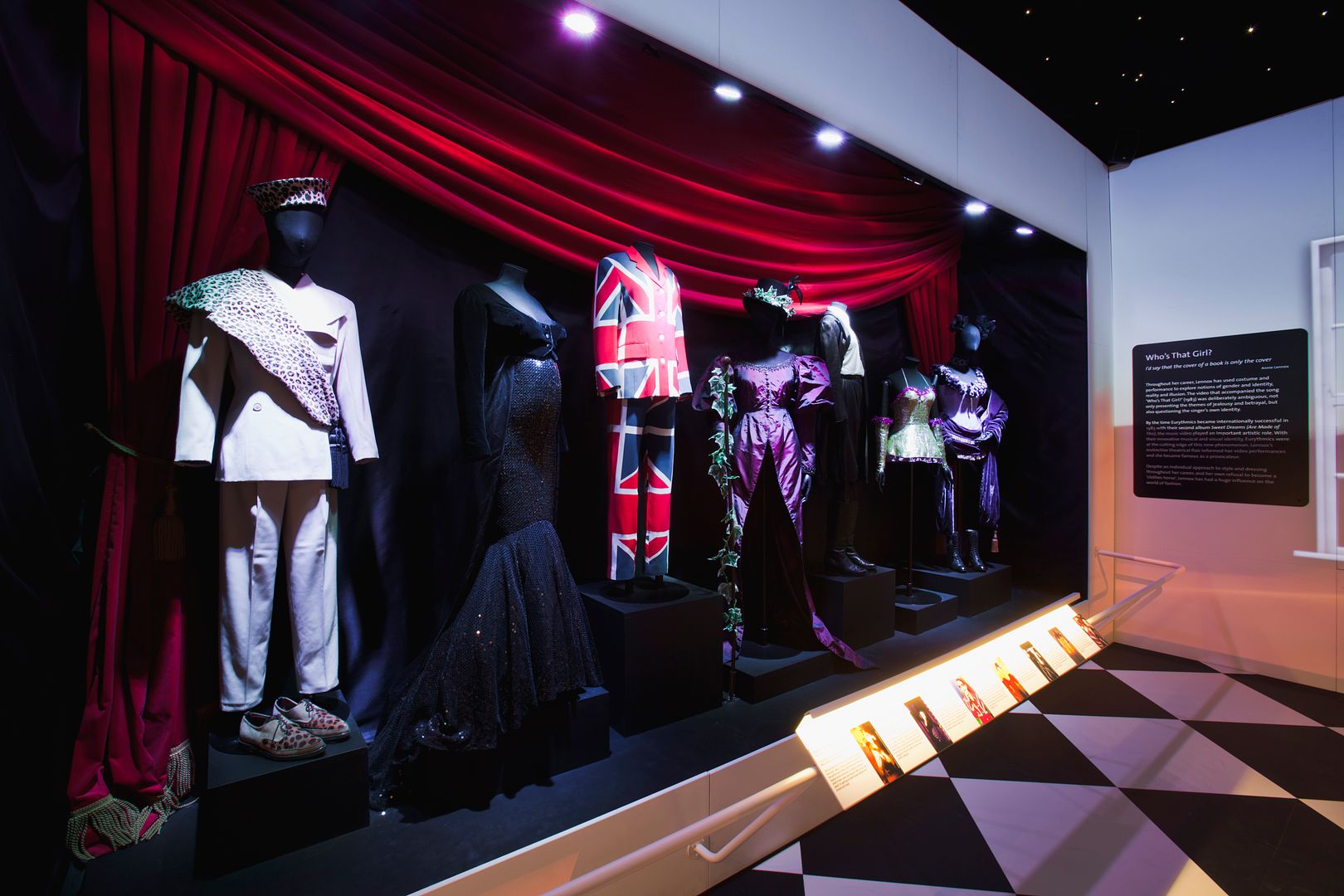
The mannequin display.' © V&A images
The end of the exhibition is a series of portraits of Annie Lennox throughout her career. A quote from Lennox sets the tone: “Photographic images capture moments in time… The images become symbolic and metaphorical… offering us the opportunity to investigate or ‘decode’ ourselves.” Displayed opposite a large screen looping her music videos, the portraits are an extension of her carefully developed persona. Known for her chameleon-like ability to shift identities and images, this is as much a ‘persona’ as that of a musician who sticks to one style. From images that explore “femininity and power”, by Satoshi Saikusa for Lennox’s album Diva (1991), to those that combine both male and female accessories for an all-inclusive and non-defining exploration of gender, by Brian Aris from 1983, the portraits are illuminating due to the variety of representations they exhibit. The constant themes are those of gender and sexuality, ideas that Lennox playfully brought into the conversation of British culture through music in the 1980s. The most lasting impact of Lennox, beyond her back catalogue of hits, is this melding of genders and subversion of traditional identities. Another suit of hers is on view at the same time in the exhibition, 'Postmodernism: Style and Subversion 1970-1990,' also at the Victoria and Albert Museum, aligning Lennox indelibly with the cut ‘n’ mix aesthetic and ‘bricolage’ of identities and ideas that were key components of the movement.
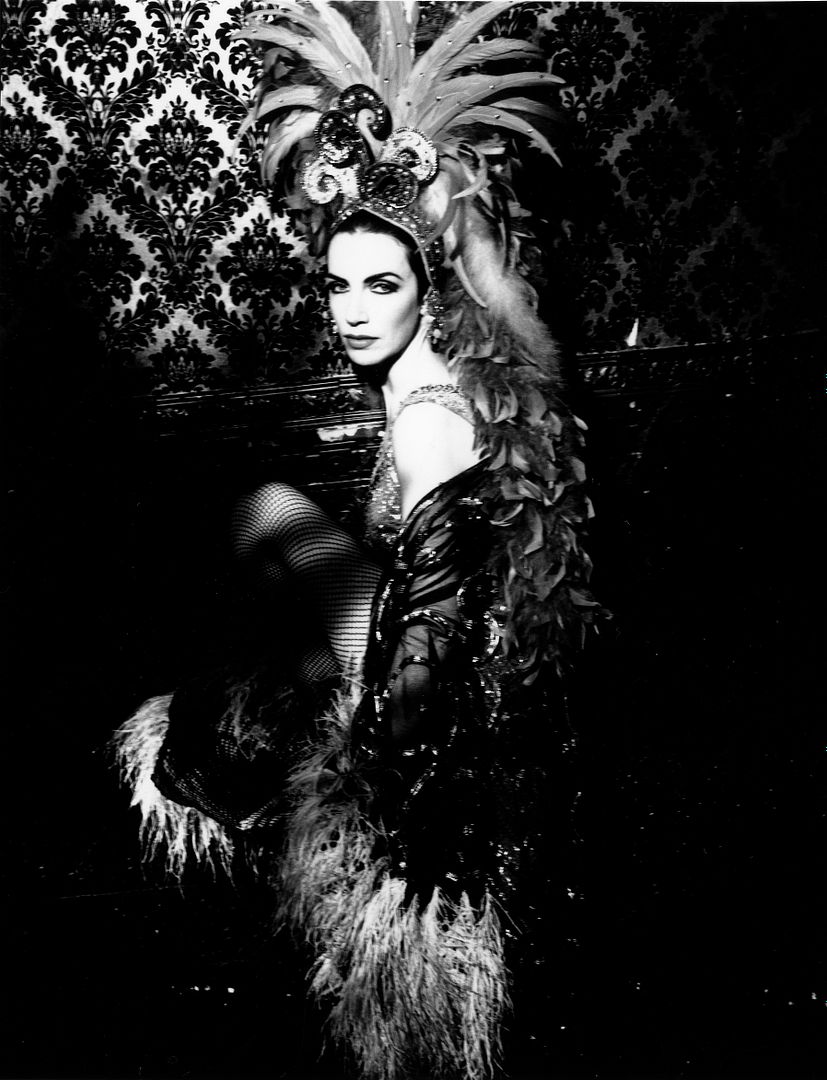
Annie Lennox, 1991. Copyright Satoshi Saikusa.
Though a small exhibition, The House of Annie Lennox is a well-planned tribute to a revered British icon. Seen in conjunction with Postmodernism, it is a testament to the widespread changes in definitions of gender and sexuality that occurred in the 1970s and 80s. Any exhibition that is developed so closely with the help of its subject is always in danger of losing a sense of critical distance, as happens here — the wall texts and quotes have a tendency to be fawning, placing Lennox in the place of an ‘Icon’ without providing a complete understanding of why and of the broader culture surrounding her ascent. This is not to say that she isn’t an icon — simply that a broader analysis might elicit a deeper understanding of Lennox’s motivations and her work.
